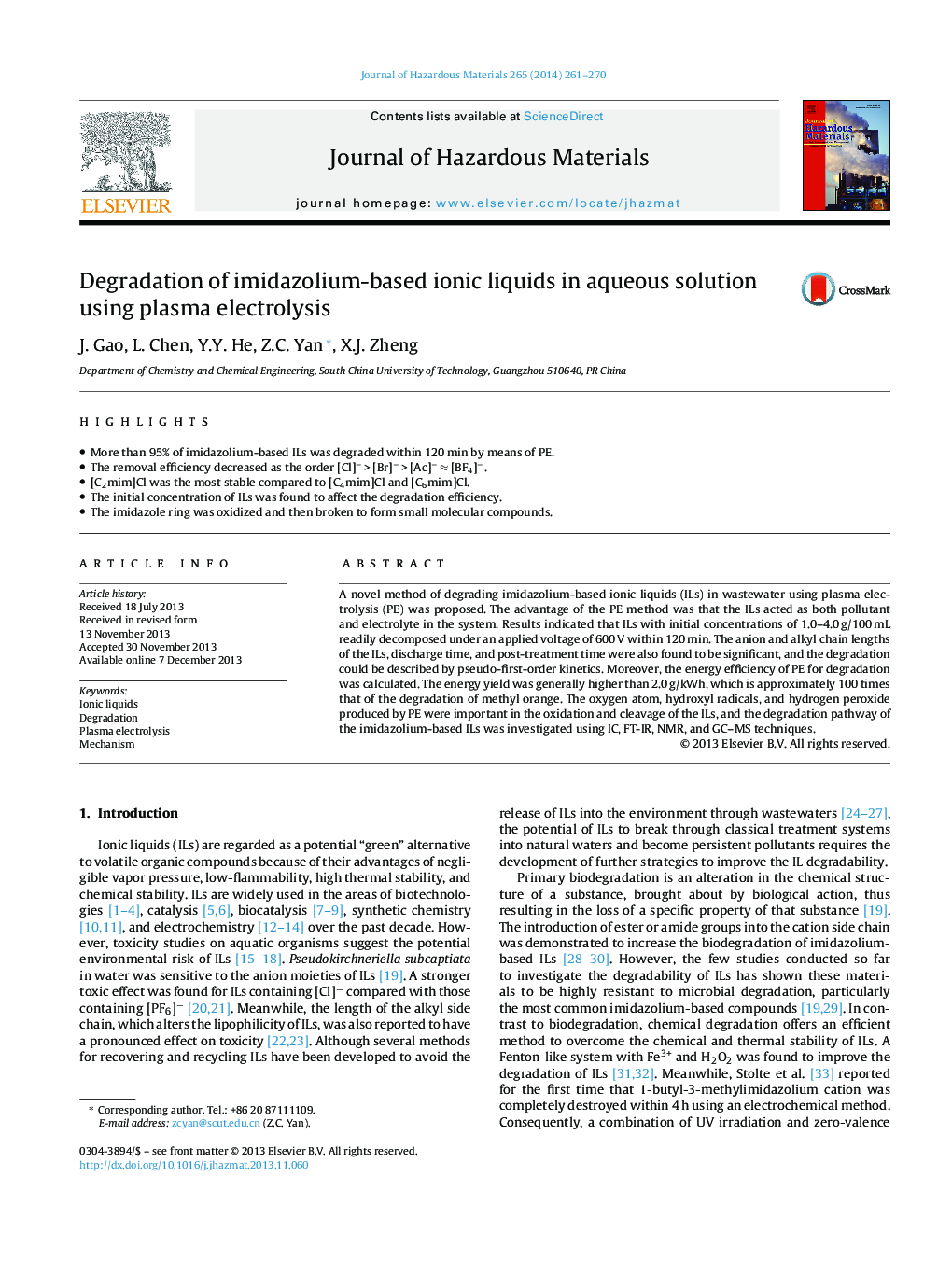| Article ID | Journal | Published Year | Pages | File Type |
|---|---|---|---|---|
| 576958 | Journal of Hazardous Materials | 2014 | 10 Pages |
Abstract
A novel method of degrading imidazolium-based ionic liquids (ILs) in wastewater using plasma electrolysis (PE) was proposed. The advantage of the PE method was that the ILs acted as both pollutant and electrolyte in the system. Results indicated that ILs with initial concentrations of 1.0-4.0Â g/100Â mL readily decomposed under an applied voltage of 600Â V within 120Â min. The anion and alkyl chain lengths of the ILs, discharge time, and post-treatment time were also found to be significant, and the degradation could be described by pseudo-first-order kinetics. Moreover, the energy efficiency of PE for degradation was calculated. The energy yield was generally higher than 2.0Â g/kWh, which is approximately 100 times that of the degradation of methyl orange. The oxygen atom, hydroxyl radicals, and hydrogen peroxide produced by PE were important in the oxidation and cleavage of the ILs, and the degradation pathway of the imidazolium-based ILs was investigated using IC, FT-IR, NMR, and GC-MS techniques.
Related Topics
Physical Sciences and Engineering
Chemical Engineering
Chemical Health and Safety
Authors
J. Gao, L. Chen, Y.Y. He, Z.C. Yan, X.J. Zheng,
